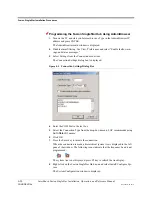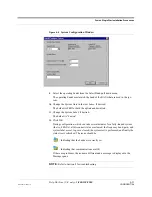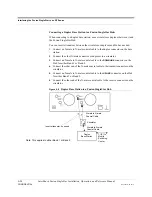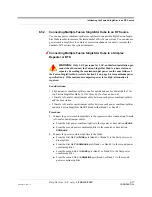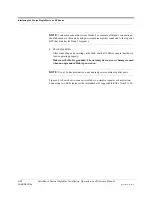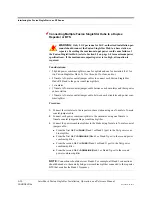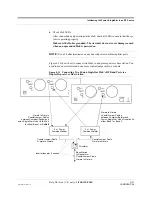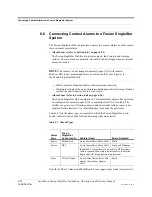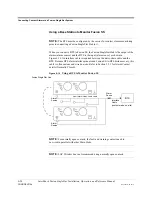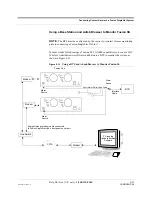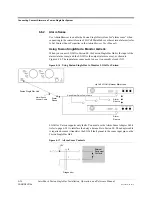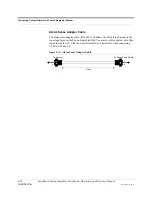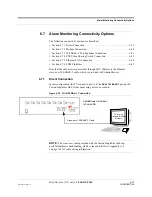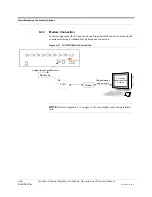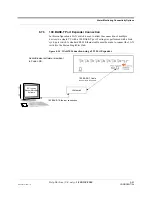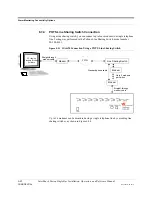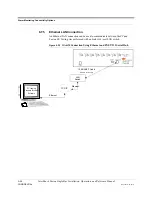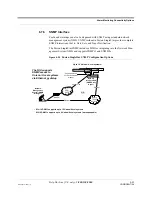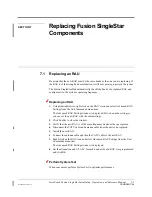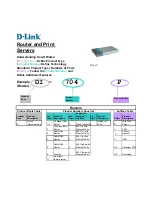
Connecting Contact Alarms to a Fusion SingleStar System
6-32
InterReach Fusion SingleStar Installation, Operation, and Reference Manual
CONFIDENTIAL
D-620605-0-20 Rev A
6.6
Connecting Contact Alarms to a Fusion SingleStar
System
The Fusion SingleStar Hub can generate (source) two contact alarms as well as sense
three external contact alarm.
• Alarm Source (refer to Section 6.6.1 on page 6-33)
The Fusion SingleStar Hub has two alarm contacts, fault (major) and warning
(minor). These contacts are normally-closed (NC) and will open when an internal
alarm is detected.
NOTE:
The contact can be changed to normally-open (NO) with Admin-
Browser. This is not recommended since no alarm would be sent if power to
the Fusion SingleStar Hub fails.
• Fault is activated when any faults or disconnects are detected.
• Warning is activated when any warning conditions are detected except lockout
or when the end-to-end system test is not valid.
• Alarm Sense (refer to Section 6.6.2 on page 6-36)
The Fusion SingleStar Hub can monitor a 3 external alarm contacts. Each port can
be configured for normally-open (NO) or normally-closed (NC) contacts. The
interface expects a set of floating contacts, and an external voltage source is not
required for this interface. Use AdminBrowser to monitor the port status.
Table 6-7 lists the alarm types, equipment to which the Fusion SingleStar is con-
nected, cable(s) used, and the faults and warnings that are detected.
Table 6-7
Alarm Types
Note that LGCell, Unison, and MetroReach Focus support only faults (major errors).
Alarm
Type
Fusion
SingleStar
Connected to
Cable(s) Used
Errors Detected
Source
MetroReach
5-port Alarm Daisy-Chain Cable
Faults
Source
BTS
5-port Alarm Daisy-Chain Cable
Faults and Warnings
In addition, a custom daisy-chain cable-to-BTS interface
cable is required. Make this interface cable to the desired
length and with the appropriate pin placement.
Sense
LGCell/Unison
5-port Alarm Daisy-Chain Cable
and the Alarm Sense Adapter
Cable
Faults



